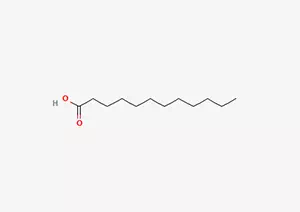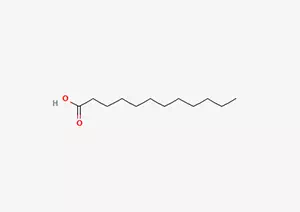All Categories


Lauric Acid CAS 143-07-7, Lauric Acid, CAS 143-07-7
Acidity: Weak acid (pKa≈4.92-5.3), capable of reacting with bases to form salts (such as sodium laurate).
CAS : 143-07-7
Formula : C₁₂H₂₄O₂
Mol. wt. : 200.32
EINECS : 205-582-1
| CAS | 143-07-7 |
| Molecular formula | C₁₂H₂₄O₂ |
| Molecular weight | 200.32 |
| EIENCS | 205-582-1 |
| Form | White needle-like crystals or powder, with a slight laurel oil aroma |
| Melting point | 43–46°C |
| boling point | 225°C (13.3 kPa) / 298.9°C |
| Density | 0.8679 g/cm³ (50°C) |
| Solubility | Insoluble in water Readily soluble in methanol, chloroform and ether; Slightly soluble in acetone and petroleum ether |
| PKA | / |
| Color | White |
| Storage temp | / |
Acidity: Weak acid (pKa≈4.92-5.3), capable of reacting with bases to form salts (such as sodium laurate).
Reactivity
Esterification with alcohols generates laurate esters (such as cosmetic emulsifiers).
It reacts with ammonia to form lauramide (a raw material for surfactants).
Reduce to lauryl alcohol (used in detergents).
Stability: Stable at room temperature, but should be kept away from light, oxidants and high temperatures (flash point > 110°C).
(1)Surf···'!=' ')}
(1)Surfactants and Daily Chemicals (Core Applications)
Anionic type: Sodium lauryl sulfate (shampoo foaming agent).
Cationic type: Lauryl trimethylammonium salt (disinfectant, fabric softener).
Nonionic type: Polyoxyethylene laurate (emulsifier).
Cosmetics: soap-based cleanser, moisturizer, lipstick (to improve texture and stability).
(2) Food and Medicine
Food additives
Emulsifiers (such as SSL, DATEM), preservatives (FEMA limit: 2.4 mg/kg for candies, 315 mg/kg for oils).
Medium-chain triglyceride (MCT) raw materials, used in sports nutrition products.
Pharmaceutical application
Suppository bases (such as Suppocire®), tablet lubricants.
Glycerol monolaurate (antiviral preparation).
(3) Industrial and special uses
Plastics/rubber: PVC stabilizer, rubber vulcanization accelerator.
Metalworking: Rust inhibitors for cutting fluids, components of grease (lithium-based grease).
Pesticide: Root-knot nematode control agent (inhibits egg hatching).
Phase change energy storage materials: Utilizing their latent heat of melting (solar heat storage, building energy conservation).
Toxicity: Excessive intake (> 100,000 IU/ day) may cause headache, liver damage and decreased bone density.
Stability measures: It should be stored away from light and at low temperatures. The product often enhances its antioxidant properties in the form of acetate/palmitate.
Regulation example:
Taiwan: Capsules/tablets are limited to 10,000 IU (3,000 μg RE) per day.
The European Union (SCCS) : Recognizes the safety of retinol and its esters in cosmetics.
* Prompt reply and 24 hours online, professional team to provide best price and high quality product.
* Sample testing support.
* Every batch of products will be tested to ensureits quality.
*The packing also can be according the customers` requirment.
*Any inquiries will be replied within 24 hours.
*we provide Commerical Invoice, Packing List, Bill of loading, COA , Health certificate and Origin certificate. If your markets have any special requirements, let us know.